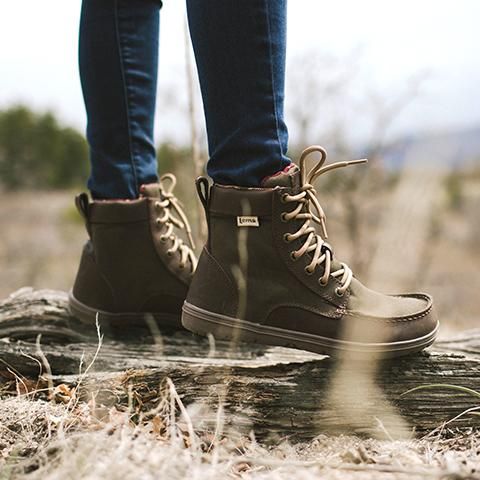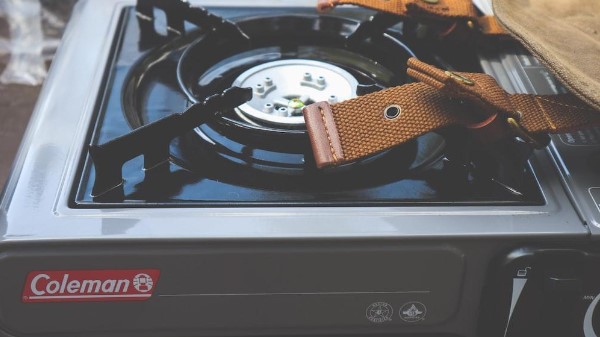How to Choose Hiking Shoes: The Ultimate Guide
Hiking is a popular outdoor activity that allows you to connect with nature and explore beautiful landscapes. Whether you’re a seasoned hiker or just starting out, having the right pair of hiking shoes is essential for a comfortable and enjoyable experience on the trails. In this comprehensive guide, you will learn all about how to choose hiking shoes that suit your needs and preferences.
Table of Contents
How to Choose Hiking Shoes: Types of Hiking Footwear
There are several types of hiking footwear available, each designed for different hiking conditions and objectives. Understanding the advantages and attributes of each type will help you make an informed decision when selecting your hiking shoes.
Hiking Boots
Hiking boots are a classic choice for hikers and offer excellent support and ankle protection. They are typically made with durable materials such as full-grain leather or synthetic materials. With a higher cut and heavier weight, hiking boots are suitable for rough terrains and carrying heavy loads. They provide stability and protect your feet from mud, snow, and water. Hiking boots are a great option for those who prioritize ankle stability and ruggedness.
Trail Runners
Trail running shoes are a more lightweight and nimble option for hiking. They are designed with modern rubber and foam technologies to provide support and stability while allowing for faster-paced movements. Trail runners are ideal for those who enjoy running on the trails and prefer a lighter shoe. However, they may not provide as much ankle support and are less suitable for carrying heavy backpacks.
Hiking Shoes
Hiking shoes strike a balance between the support of hiking boots and the lightweight freedom of trail runners. They are low-cut shoes that offer ankle mobility and are suitable for day hikes with a light pack. Hiking shoes often feature a waterproof/breathable membrane to keep your feet dry in wet conditions. They are a popular choice for hikers who want the durability and protection of a hiking boot with the comfort and agility of a shoe.
Confused between shoes and boots? Check out this video. Even check out the best compact gear for hiking
How to Choose Hiking Shoes: Best Uses for Hiking Shoes
Hiking encompasses a wide range of adventures, from leisurely strolls on maintained trails to fast-paced hikes in rough terrains. Understanding the different uses for hiking shoes is an important factor in how to choose hiking shoes.
Day Hiking
Day hiking refers to shorter hikes that require minimal gear. These hikes can range from leisurely walks on maintained trails to more challenging terrains. Since you only need to carry essentials like food, water, and sunscreen, you can opt for lighter footwear. All the shoes mentioned in this guide are suitable for day hiking, providing comfort and versatility for various environments and terrains.
Fast Hiking (Fastpacking)
Fast hiking, also known as fastpacking, involves covering long distances at a faster pace. It’s all about maximizing mileage and minimizing pack weight. For fast hiking, you can choose between hiking shoes or trail runners. Hiking shoes offer more support and stability, while trail runners provide lightweight cushioning and agility. The choice depends on your preference and the level of support you need for your feet and ankles.
Backpacking with Light or Medium Loads
Hiking shoes are perfect for backpacking trips with light or medium loads. If you occasionally embark on multi-day hikes with minimal gear, low-cut hiking shoes provide the support and durability you need. Experienced backpackers with strong ankles can confidently navigate rough terrains with hiking shoes designed for their specific needs. Look for shoes with a stiffer construction and lateral tension to handle medium pack weights.
Thru-Hiking
Thru-hiking involves completing long-distance point-to-point trails, such as the Pacific Crest Trail or the Appalachian Trail. Thru-hikers prioritize lightweight gear and comfort over everything else. Many thru-hikers opt for trail running shoes due to their lightness and comfort. However, some hikers who carry more weight and prefer extra support may choose midweight hiking shoes.
Factors to Consider When Choosing Hiking Shoes
Now that you have a better understanding of the different types of hiking footwear and their best uses, let’s delve into the essential factors to consider when choosing your hiking shoes.
Terrain
The type of terrain you will be hiking on plays a significant role in selecting the right hiking shoes. Easy trails that are stable and even require flexible shoes that allow for natural foot movement. On uneven trails with rocks, roots, and mud, you’ll need shoes with stiffer outsoles for better stability. Off-trail hiking, which involves navigating unstable terrain and crossing rivers, demands shoes that offer excellent traction and protection.
Backpack Weight
The weight of your backpack affects the type of hiking shoes you should choose. If you’re carrying a light pack, you can opt for lighter and more flexible shoes. However, if your backpack is heavier due to camping equipment and supplies, it’s advisable to wear more sturdy shoes that provide extra stability and support. Higher-cut shoes also offer ankle protection when carrying heavy loads.
Hiking Duration and Pace
Consider the length and pace of your hikes when selecting your hiking shoes. Longer hikes and faster-paced movements may require more support and stability. If you’re covering long distances or prefer a brisk pace, look for shoes that offer sufficient cushioning and durability. Conversely, if you’re embarking on shorter hikes at a leisurely pace, shoes with lighter weight and flexibility may be more suitable.
Foot Shape and Fit
Finding the right fit for your hiking shoes is crucial for comfort and performance. The shape and volume of the shoe’s interior should match the anatomy of your foot. When trying on shoes, ensure there are no pressure points or discomfort. It is recommended to try on shoes at the end of the day when your feet may be slightly swollen. Leave enough space for your toes to move comfortably and prevent blisters.
Shoe Features
Consider the specific features you need in your hiking shoes. Sturdy shoes with reinforcements, such as rubber toe protectors and heel guards, offer added protection and durability, making them suitable for rocky paths or off-trail hiking. Thicker outsoles provide better protection for the soles of your feet. Lighter-weight shoes reduce fatigue but may not be as durable. Assess your requirements and choose shoes that align with your priorities.
Hiking Shoe Features
Choosing the perfect pair of hiking boots involves considering various features to ensure comfort, durability, and functionality on the trail. Here are key features to keep in mind:
1. Material
- Leather: Provides durability and water resistance, but may require breaking in.
- Synthetic Fabrics: Lightweight, quick-drying, and often more affordable than leather.
2. Waterproofing
- Gore-Tex or eVent Technology: Common waterproofing materials that keep feet dry while allowing moisture to escape.
3. Ankle Support
- Low-Cut: Ideal for light trails and day hikes.
- Mid-Cut: Strikes a balance between ankle support and flexibility.
- High-Cut: Offers maximum ankle support, suitable for rough terrains and backpacking.
4. Traction and Outsole
- Deep Lugs: Provide better grip on varied surfaces.
- Vibram Soles: Known for durability and traction on challenging terrain.
5. Toe Protection
- Rubber Toe Caps: Guard against rocks and roots, enhancing durability.
6. Cushioning and Insole
- EVA or PU Midsoles: Offer comfort and shock absorption.
- Removable Insoles: Allow customization and easy replacement.
7. Weight
- Lightweight Boots: Suitable for day hikes and agility.
- Heavy-Duty Boots: Ideal for backpacking and rough terrains.
8. Breathability
- Mesh Panels: Enhance airflow, keeping feet cool during warmer hikes.
9. Fastening System
- Traditional Laces: Provide a secure fit.
- Quick-lacing Systems: Offer convenience for easy adjustments.
10. Break-in Period
- Consider the Break-in Time: Leather boots often require more time to mold to your feet.
11. Purpose and Terrain
- Consider the type of hiking: Different boots cater to day hikes, backpacking, or mountaineering.
How to choose your shoe size?
Selecting the right shoe size is crucial for comfort and performance during hikes. Follow these steps to find your perfect fit:
- Measure Your Feet: Use a Brannock device or ruler to measure the length and width of both feet. Sizes can vary between brands, so measure each time you shop.
- Consider the Socks: Wear the type of socks you plan to use while hiking, as this affects the fit.
- Allow Room for Movement: Ensure there’s a thumb’s width of space between your longest toe and the shoe’s end. This prevents discomfort during downhill descents.
- Check Width: Some brands offer different width options. If you have wider feet, consider shoes with a broader design.
- Consider Half Sizes: If you’re between sizes, opt for the half-size up to accommodate any swelling during longer hikes.
- Walk and Test: Walk around in the shoes to assess comfort, support, and any potential pressure points. Don’t hesitate to try different sizes and styles until you find the one that feels just right.
Choosing Hiking Shoes Based on Foot Concerns
Tailoring your hiking shoe choice to address specific foot concerns is crucial for a comfortable and pain-free outdoor experience.
- Arch Type: Identify your arch type – whether it’s high, low, or neutral. Shoes with proper arch support cater to different foot structures, preventing discomfort and fatigue.
- Pronation: Understand your pronation type – overpronation, underpronation, or neutral. This information guides you towards shoes that provide the right support and stability.
- Foot Width: If you have wider or narrower feet, select hiking shoes available in different width options to ensure a snug yet comfortable fit.
- Toe Issues: Address specific toe concerns. For those with bunions or wide toes, opt for shoes with a spacious toe box. Consider shoes with reinforced toe caps for added protection against rocks and roots.
- Plantar Fasciitis: If you suffer from plantar fasciitis, choose hiking shoes with excellent arch support, cushioning, and shock absorption to alleviate heel pain.
- Foot Shape: Consider the overall shape of your foot. Some shoes are designed for a more narrow or wide foot shape, ensuring a tailored fit.
- Foot Sensitivity: If you have sensitive feet, prioritize shoes with ample cushioning, soft inner linings, and a flexible design to minimize irritation and pressure points.
- Orthotic Compatibility: If you use orthotic insoles, make sure the hiking shoes have a removable insole or provide enough space to accommodate custom orthotics.
By aligning your hiking shoe choice with your specific foot concerns, you enhance comfort, reduce the risk of injuries, and make the most of your outdoor adventures.
How to Choose Hiking Shoes: Concluding Remarks
Choosing the right pair of hiking shoes is essential for a comfortable and enjoyable hiking experience. Considering factors such as terrain, backpack weight, hiking duration, and fit when it concerns how to choose hiking shoes.
Remember to prioritize comfort, durability, and the specific demands of your hiking style when selecting your shoes. With the right pair of hiking shoes, you can embark on exciting adventures, explore beautiful landscapes, and make lasting memories in the great outdoors.

Meet Sarah, a passionate traveler and camping enthusiast who loves to explore the great outdoors. With years of exploring, she has become an expert in testing and reviewing the best tents on the market which got her to start mytravelingtents.com. Her insightful reviews provide valuable information to fellow adventurers looking for the perfect tent for their next camping trip.






